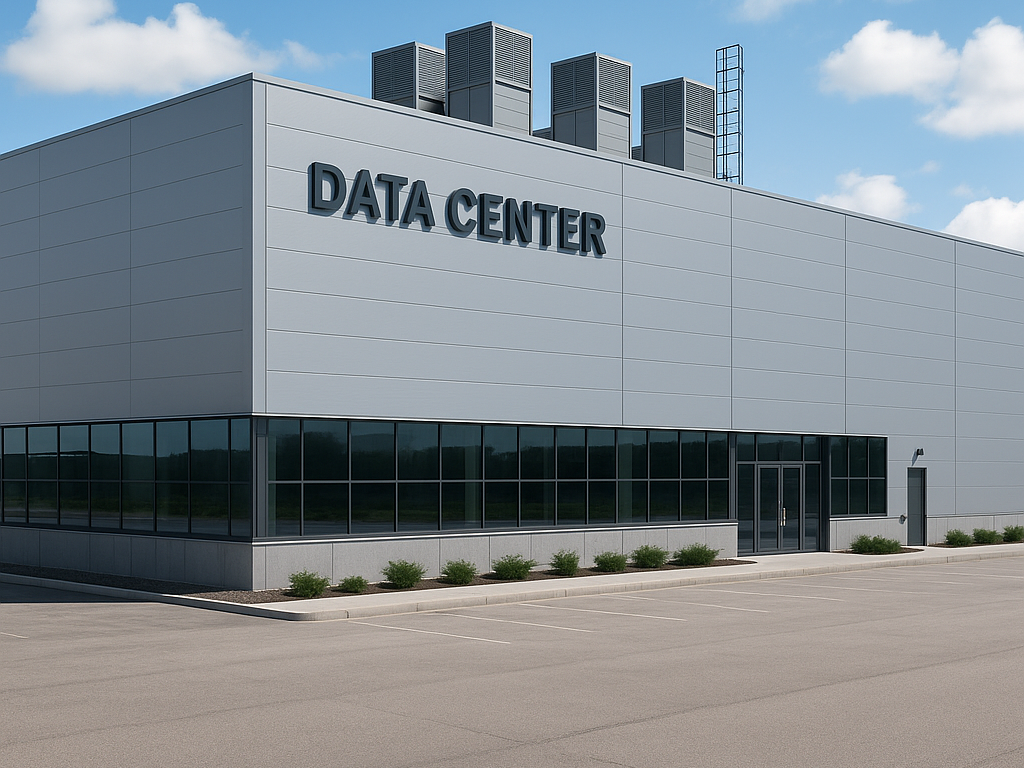
Data Centers, Boon or Burden?
As many have probably read in the Tallassee Tribune, I am more than excited to be campaigning for Tallassee’s City Council this year. In my enthusiasm I noted that Montgomery is getting a Meta datacenter in the near future. And I thought to myself, why not us? What would keep us from getting a data center in Tallassee.
Tallassee boasts a considerable amount of open land heading towards the interstate. Surely some other big company could make their home there, I mused. After all, the economic benefits would be enormous I am sure! We would get quite a lot of work in the form of construction, new revenue, and potentially attract IT talent to the area, or provide IT jobs for current residents. What could be better?
So, I reached out to a contact that works very closely with these massive data centers out west and the first thing he said stopped me in my tracks:
“Let me tell you why you don’t want a data center.”
That wasn’t what I expected to hear – but I listened. Drawing from his firsthand experience, he walked me through the real costs of these facilities, point by point.
Heavy Resource Consumption
I had not considered just how much resources these data centers consume. To give you an idea, the city of Las Vegas, Nevada consumes about 13 MWh per year. (Any electricians correct me if I am measuring incorrectly). According to my contact, these larger facilities can eat up as much as 10 to 13 times that amount.
Not only do data centers need electricity, but all the electronics need cooling. Normally, these facilities are water cooled with some reporting consumption of 300,000 gallons daily.
While Tallassee sits on the river and may seem to have no water shortage, this water would need to be pumped from our municipal system. That kind of demand would likely show up in the form of higher water and power bills for residents.What about all the tech jobs these centers could bring? Unfortunately, my contact explained that most large data centers are largely unmanned. They typically employ a small number of security staff and perhaps one or two on-site server technicians. Even then, those roles are often filled by relocated company staff, not local hires.
In other words, the majority of job creation would end after construction, leaving little lasting impact on our workforce.
Limited Job Market Impact
So what about all the IT people that these data centers would hire? My contact pointed out that in those large data centers, they are almost un-manned. A couple of security personnel might be hired as well as a server expert that could fix things in a pinch. But he went on to say that often, these data centers have their own people relocate. This would eliminate most jobs availability for local residents. The real job impact would end after construction.
Big Corporate Bullies
Beyond resource use and limited job creation, some of these companies simply don’t play fair.
Take xAI, for example. They recently built a data center in Memphis, Tennessee. While they applied for permits for 15 gas turbines, they’re now reportedly operating 35—creating serious pollution concerns.
When confronted, large corporations often find it easier to pay fines than change course. And on top of that, they tend to demand more tax breaks and incentives, even while turning huge profits. It’s a lopsided deal—one that too often leaves local communities shortchanged.
Economic Alternatives to a Data Center in Tallassee
As I finished my conversation with my contact, I realized just how wrong a move that would have been for our community. And I am glad to have had access to someone in the know.
It not a data center in Tallassee then, what next?
In reality, we need to create an environment here in Tallassee where upstart entrepreneurs can grow and thrive. I don’t pretend to know all the answers of Tallassee’s business-scape yet but I hope to listen and learn so we can help this community reach its full potential.

2 replies on “I Was Wrong About Data Centers – Here’s Why Tallassee Deserves Better”
The amount of incorrect information here is astounding. From power requirements to cooling calculations and methods.
However, one thing is correct, Tallahassee will not get a DC. They won’t because they have no internet infrastructure. Generally a DC requires multiple potential carriers and multiple potential power sources.
I imagine you are the same fellow that I talked to yesterday. Assuming that is the case I wanted to include our comments involving correct information so other can have them handy.
Thanks for pointing those aspects out. If something of this scale were to come to fruition here, things such as infrastructure are important to take into account. It would be a long term goal after all.
As far as the numbers go, I wasn’t so sure so I linked those facts to articles that mentioned them.
I would welcome more accurate figures if you have them. It’s definitely important to be in possession of the facts.
It was brought to my attention as well that data centers such as Meta’s in Montgomery bring in very technical jobs as well. Regardless if those jobs are held by locals or move-ins, attracting those high-earning individuals to the community would raise the amount of disposable income in the area.
“I would be surprised if any Tallahassee citizens are qualified for any highly technical data center jobs. Now “move ins” do bring money to the local economy and pay taxes, etc., but it will probably be someone from somewhere else.
As far as power consumption, I’ve seen data centers that use as little as 2 MWh’s. Vegas consume about 6000 MWh. A MWh can power about 200 average homes in the U.S.
Water, it’s more difficult to say, but that figure is not possible. The reason I say this is, water cooling a data center, even an evaporative cooling system definitely will not use near the amount quoted, even if it is hyper-scaled like the giant AI data centers. If you are looking at glycol or closed loop chillers, it definitely is not going use more than an average office building.
It only take 700 gallons to create a MWh using a wet recirculating cooling nuclear reactor, so a consumption of 300k gallons a day breaks the laws of thermal dynamics, because you could focus that much steam into a boiler and power the entire data center.
Not trying to call you out, it’s just those numbers are off. If you would like to chat about the subject though, feel free to contact me.”